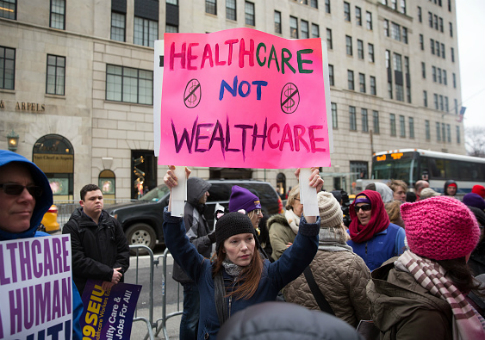Blue Cross Blue Shield insurers operating in the Affordable Care Act individual market will get close to break-even margins in 2017, according to a report from Standard & Poor's Global Market Intelligence.
Obamacare's individual market is fragile and needs about five years to stabilize since its inception in 2014, the report says. This means insurers in this market will likely not hit target profitability until 2018.
"After starting on the wrong foot in 2014, and deteriorating further in 2015, we are seeing the first signs in 2016 that this market could be manageable for most health insurers," the report said. "But it isn't on stable footing either."
While insurers are expected to get close to break-even in 2017, there is uncertainty as to what will happen in 2018 since many legislative changes are being considered. A lawsuit over Obamacare's cost-sharing reduction subsidies also is pending.
S&P said if the individual market remains the same in 2018, it expects more insurers will report profits in the low single digits. The market will restart is changes are made to Obamacare.
The report noted there likely will be more premium increases in 2018, but they are expected to be lower than the 22 percent average rate increase seen in 2017.
In addition to profitability, the lack of insurers participating in the Obamacare exchanges are of increasing concern.
"Based on recent exit announcements, states like Tennessee and Iowa may have counties with no insurer on the exchange in 2018," the report states. "This issue may worsen if the uncertainty around market rules and subsidies isn't clarified sooner rather than later."
The individual market is not in a death spiral, but the market is fragile and in the early stage of development, according to the S&P analysis.
"Right from the start multiple external factors have disrupted this market, such as technical issues with the healthcare.gov website in 2014, after-the-fact rule changes related to the grandmothered plans, altering the risk corridor to be budget-neutral, and the more recent [cost-sharing reduction] court case and potential for legislative overhaul," the report said. "Every time something new (and potentially disruptive) is thrown into the works, it impedes the individual market's path to stability."
